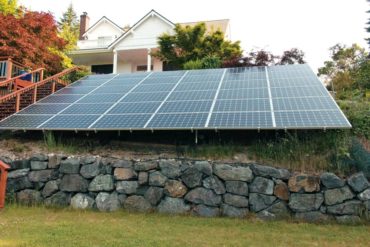
The sight of solar photovoltaic (PV) panels on residential roofs around West Sound is no longer a novelty. Enticed by the idea of saving on their power bills — or perhaps the idea of helping save the planet — homeowners are joining the renewable-energy movement.
It’s not a cheap investment. Although PV installation prices are lower now compared to a few years ago, you’re still likely looking at a minimum of $10K. Online market SolarSage estimates the current cost in Washington state at $9,954-$13,650 for a system with a capacity of 6 kilowatts and $16,590-$22,750 for a 10-kW array.
What makes solar attractive — other than savings in the power bill — is the variety of incentives through federal tax credits and state programs. These incentives can add up to several thousands a year, which means the system would pay for itself faster in the long term.
“We jumped on it because of the incentives. You have to really look at it as an investment,” Dale Schuster says.
Schuster and his wife, Carolyn, installed a 10-kW system for their Port Orchard home in two phases, 6,400 kW in October 2013 and the rest the following October. Rather than placing the PV panels on their home, they chose the roof of their shop, which is “angled perfectly south,” Schuster says.
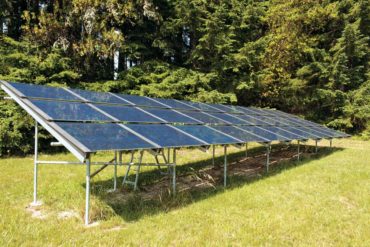
To take advantage of all the incentives, the system connects to the Puget Sound Energy power grid through the so-called net-metering program. Any excess generated beyond the family’s usage feeds back into the grid, though typically that only happens in the sunny months.
That excess is then credited against the couple’s PSE bill. Since the utility has to pay for the excess at retail rate, that essentially “rolls the meter back.”
That’s just one advantage of residential solar PV. There’s also a 30 percent federal tax credit applied over two years (the percentage will be lower after 2019).. And perhaps the biggest payoff comes in the form of an annual rebate check through the Washington State Renewable System Incentive Program. The program, which was implemented by the state Legislature, pays homeowners for the solar PV energy their residential system generates.
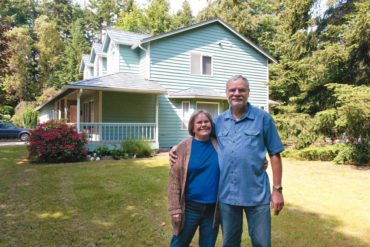
The incentive has an annual cap of $5,000 and only lasts eight years, and there’s also a total cap of 50 percent of the cost of the system. The rate ranges based on the certification date of the installation and the system size (1-12 kWh is considered residential, which pays higher rates). There’s a bonus for solar modules manufactured in the state.
Every year, the Schusters receive a check of around $4,500 from PSE as a pass-through payment that’s actually funded by the state.
“PSE pays for every watt produced, even if I use it, then I get credit for the extra. The cost [of the PV system] was front-loaded, but it pays off with time,” Schuster says.
Doing the ROI Math
Schuster is happy with the investment and says he doesn’t regret it at all. He expects to break even on his costs in 2020, giving him a break-even period of about seven years from the first intallation. And while PV panels degrade and produce less energy over time, the brand he bought promises lifetime top efficiency.

Yet Schuster knows that if he and his wife didn’t grab this opportunity back in 2013, he’d have to take a closer look today. Although the upfront cost is now lower — a 55 percent drop in the last five years, according to the Solar Energy Industries Association — so is the state incentive.
As early adopters, the Schusters’ incentive for their Washington-made system started out at 54 cents for every kWh produced. The Legislature revised the program in 2017. So if the couple were to install and certify a new PV system in fiscal year 2018 (through June), that rate would be only 21 cents.
“The return on investment takes longer now,” Schuster says.
Each year, the incentive for homeowners installing new systems will continue to drop — reaching 12 cents total per kWh in fiscal year 2021, after which time the program, under the current legislation, is set to end altogether and is currently at 50.4 cents/kWh.. The Solar Incentive Investment Tax Credit (the credit you can claim on the income tax) is also currently set to expire at the end of 2023, but it had been renewed before.
“Once incentives stop, you’re only saving money on your power bill,” says Justin Holzgrove, telecommunications and community relations manager at Mason County PUD 3, which serves North Mason.
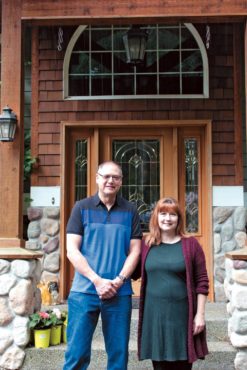
Weighing the Pros and Cons
The popularity of solar PV has grown tremendously in the last decade. Even a trip to Costco proved the idea was going mainstream — at one point, Costco sold PV kits for DIYers at its warehouses (and you can still buy them online).
Across the United States, the capacity of the annual solar PV residential installations has almost doubled in the last three years, according to market research company Statista. The Solar Energy Industries Association says that Washington state ranks 34th in the nation in the number of solar PV installations. Perhaps not surprising, California ranks first.
You may think that California’s almost-always sunny skies makes solar energy a sure bet in California, while Washington’s famously rainy winters would make the idea less appealing. But geography is not necessarily the main reason behind the adoption of residential solar PV.
California has the eighth-highest power rates in the country, while Washington is No. 4 for being the cheapest, based on data from the U.S. Energy Information Department. In February, Washington’s average rate was 9.54 cents/kWh in February (the national average was 12.62 cents and the highest in the country, Hawaii, 31.52).
“Because we have the cheapest power in the nation, the return [on investment for solar PV] is not as quick,” Holzgrove says. “And since our solar resource is not great during part of the year, vs. having great solar all year long, there’s less interest.”
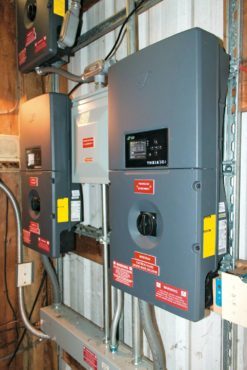
Admittedly, the biggest disadvantage of Washington’s weather is the fact that when solar production is highest, the electricity use is lowest, and vice versa. Winter bills are high if you have electric heat, yet solar generation drops by as much a two-thirds or even more. So the typical residential system is likely to provide excess energy in the summer, depending on how energy-efficient your household is, but in the winter, it’s unlikely that you’ll escape having an electric bill unless you’re using other sources of heat.
This inverse effect also means that if you’ve been dreaming of going off the grid, you’d need to invest into solar batteries. Not only is that expensive, it also forfeits your state production incentive.
Don’t think that PV will keep your lights on during an outage, either. A system connected to the grid needs to have an override switch so the utility can disconnect the solar generation.
“It keeps the linemen working to restore the power safe,” Holzgrove explains. “The transformers that change the high voltage on power lines to low voltage for customers can take a small voltage from solar and boost it to high voltage, so if solar power remains connected while linemen are working on the line, they can be electrocuted.”
A $10,000-plus investment is not a drop in the bucket for the average homeowner, but you can have your installation financed. At least one lender, Puget Sound Cooperative Credit Union, offers zero-down loans. There are also lease programs, but read the terms carefully as they may not be as beneficial as you may expect.
Why Go Solar?
If an eco-friendly lifestyle is your main draw to solar power, solar PV is a sound choice. It’s a green, renewable and sustainable energy source (disposal still causes pollution, however, as does some manufacturing). A solar system should serve you an average of 20-25 years, and some modules well beyond that. And the only maintenance you’ll need is wiping off the panels once a year.
“It doesn’t require maintenance, it gives us a sense of some independence, and environmentally it doesn’t produce pollution once it’s installed,” says Ron Bishop, a realtor with John L. Scott in Port Orchard.
Bishop and his wife, Judy, installed a ground-mounted solar PV system in 2013 on their property, which has southern exposure. From about middle of May to the end of October, they produce enough solar energy to eliminate their power bill. And the annual incentive checks they receive essentially pay for the power bill the rest of the year.
“It’s not a short-term investment but if you’re going to be in the house for a while, I think it’s definitely worth looking into,” Bishop says.
Solar PV may also increase the value of your home. While Bishop can’t speak to that because he doesn’t sell many homes with solar panels, a study by the Lawrence Berkley National Laboratory found that homeowners across the country are willing to pay more for homes with PV. Most of the laboratory’s research centered on California, but the researchers also concluded that a home with a 3.6-kW owned system (vs. leased one) could bring an average premium of more than $10,000 for homes outside of California.
Ultimately, going solar may be more of a statement about your philosophy to live green and do what’s best for the planet.
“People who are dissatisfied with solar are those who think they’ll completely get rid of their power bill,” Holzgrove says. “”People who are the happiest are the ones who want to do something good for the planet and have a desire to own cool technology.”






























